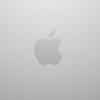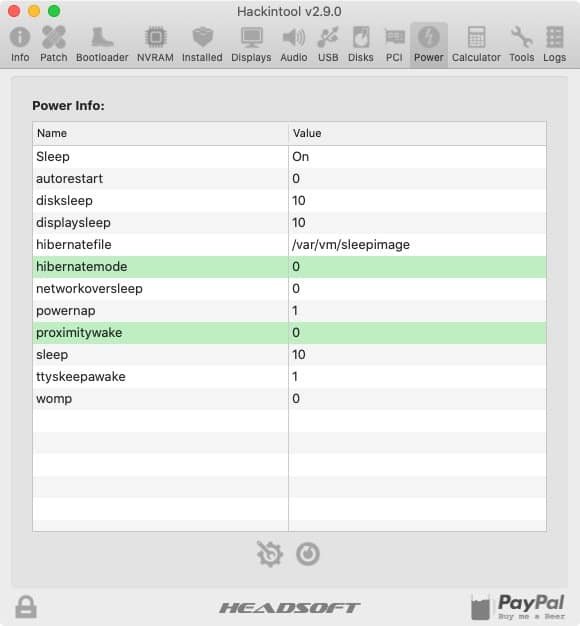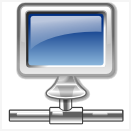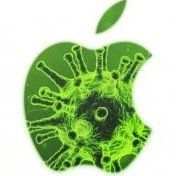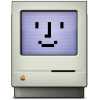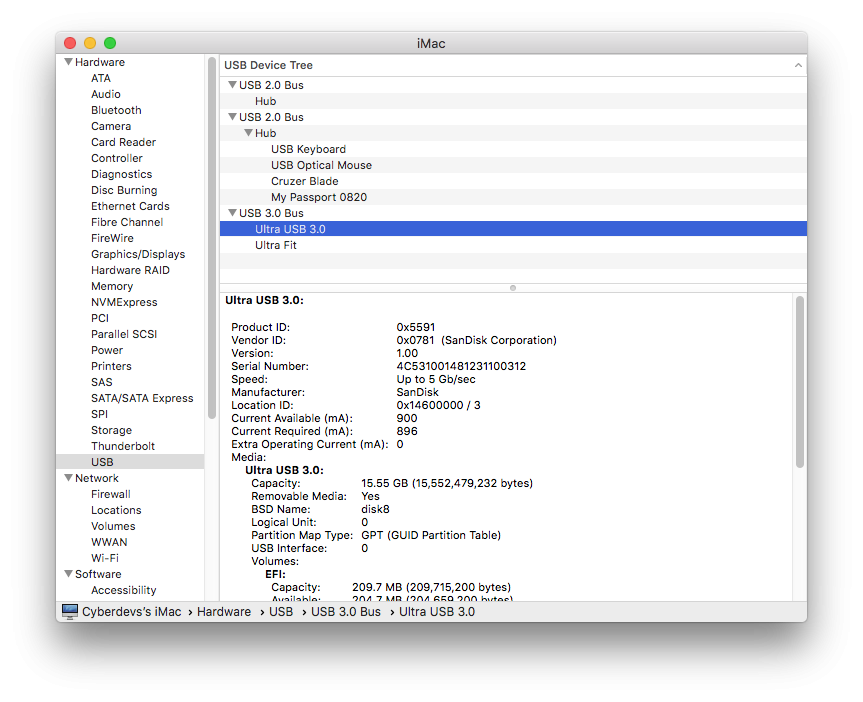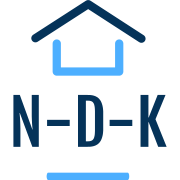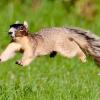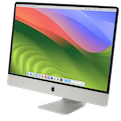Leaderboard
Popular Content
Showing content with the highest reputation on 01/05/2020 in all areas
-
thank you for fix it's great -------------------------------------------- - CloverDaemonNew v1.1.1 - macOS Version 10.15.3 (Build 19D49f) - System start at 2020-01-05 11:10:25 ------ root mount point is '/Volumes/Macintosh HD' Started with Clover r5102. Firmware vendor is 'Phoenix Technologies Ltd.'. making '/' writable as Clover.RootRW=true. Found EmuVariableUefiPresent in NVRAM. Clover.DisableSleepProxyClient=true. Sleep Proxy Client is already disabled. Installing the LogoutHook.. LogoutHook is already set. Logout hook is: /Library/Application Support/Clover/CloverLogOut SIGTERM received at 2020-01-05 11:12:07 Clover.DisableSleepProxyClient=true. Sleep Proxy Client is already disabled.4 points
-
Yes, I forgot to explain this. My Dell computer has some invisible behavior to set own variables with some period. I found no explanation and decided to block these variables. All works like it should. No unexpected crashes although I am not sure if this patch helped.2 points
-
2 points
-
There are plenty of users who suggest to use darkwake=8 or darkwake=10 or darkwake=0 boot args to solve sleep issues. Are these suggestions valid at all? For first we have to clarify something about Darkwake. The DarkWake feature was for first introduced in Mac OS X Lion. This feature allows to wake up certain parts of computer from sleep, while leaving other parts in sleep mode (for example display etc). Darkwake = display stays dark when comp wakes and performs some tasks. When tasks are done, comp should go back to sleep. But on Hack's Darkwake caused several problems, for example comps went into state, where those become inaccessible and forced reboot were needed. On some cases Darkwake caused reboots too and.. Darwake is related to Power Nap which is available since OS X Mountain Lion. Disclaimer! Before posting below please read it: If you really want to get some help from Hackintosh community, learn how to leave others out of guesswork! Learn how to collect diagnostics data which can help others on solving your case. It's annoying to ask over and over to provide some diagnostics related to Hack issue. That's why there are millions on unanswered posts on Hackintosh forums, their authors doesn't respect other's actually, they do not think out of their own shoes. Your first question before posting should be, what data is needed to help me, do I have provided all data available to help me immediately? Darkwake and XNU Darkwake is part of XNU. Darkwake behaviours are defined in IOPMrootDomain.cpp. The easiest way to check XNU version is to use terminal command uname -av. uname -av Darwin MyHack.local 19.2.0 Darwin Kernel Version 19.2.0: Sat Nov 9 03:47:04 PST 2019; root:xnu-6153.61.1~20/RELEASE_X86_64 x86_64 According to this macOS Catalina 10.15.2 uses XNU 6153.61.1. The latest publicly available source code of XNU is 4903.241.1. So we cannot check source code of latest XNU's. Please correct me if I'm wrong. Code below reveals that boot arg darkwake correlates to enum gDarkWakeFlags. PE_parse_boot_argn("darkwake", &gDarkWakeFlags, sizeof(gDarkWakeFlags)); So lets check the xnu-4903.241.1/iokit/Kernel/IOPMrootDomain.cpp for Darkwake flags: // gDarkWakeFlags enum { kDarkWakeFlagHIDTickleEarly = 0x01, // hid tickle before gfx suppression kDarkWakeFlagHIDTickleLate = 0x02, // hid tickle after gfx suppression kDarkWakeFlagHIDTickleNone = 0x03, // hid tickle is not posted kDarkWakeFlagHIDTickleMask = 0x03, kDarkWakeFlagAlarmIsDark = 0x0100, kDarkWakeFlagGraphicsPowerState1 = 0x0200, kDarkWakeFlagAudioNotSuppressed = 0x0400 }; Let's translate these values into decimals and easier to read strings HID Tickle Early = 1 HID Tickle Late = 2 HID Tickle None = 3 HID Tickle Mask = 3 Alarm Is Dark = 256 Graphics Power State 1 = 512 Audio Not Suppressed = 1024 HID = Human-interface devices, such as keyboards, pointing devices, and digitizers like pens and touch pads. As flags are used for bitwise operations, then we can easily notice that combinations 10 and 8 are for sure invalid now. darkwake=8 equals actually to darkwake=0 and darkwake=10 equals to darkwake=2. If we check older XNU versions, then these values are removed since XNU 2782.1.97 ( = Yosemite ): kDarkWakeFlagIgnoreDiskIOInDark = 0x04, // ignore disk idle in DW kDarkWakeFlagIgnoreDiskIOAlways = 0x08, // always ignore disk idle kDarkWakeFlagIgnoreDiskIOMask = 0x0C According to this boot flags darkwake=8 and darkwake=10 are obsolete if you have Yosemite or newer macOS as related flags are removed from XNU. What is the default value for darkware boot arg? According to XNU source code the default value of boot arg darkware is 3 (darkwake=3): static uint32_t gDarkWakeFlags = kDarkWakeFlagHIDTickleNone; We have to clarify that xnu 4903.221.2 is used since macOS Mojave 10.14.1 and xnu 4903.241.1 is used since macOS Mojave 10.14.3. How about the latest macOS? Sadly there is no source code available. To figure out which value is defined on latest kernel we have to download the latest available Kernel Debug Kit, which is 10.15.1 build 19B77a. By using Hopper Disassembler we see that default value on macOS Catalina 10.15.1 for gDarkWakeFlags is 0x00000003, which equals to 3. __ZL14gDarkWakeFlags: // gDarkWakeFlags ffffff80012b93b0 dd 0x00000003 So by default Darkwake should not post any HID Tickle's. This also reveals the secret why some users encounter issues with frozen peripheral device's on Hack's when Power Nap is enabled. To use Darkwake on Hack's require very well configured USB ports. Power Nap & Darkwake If you have Power Nap disabled then computer shouldn't wake automatically. On most cases darkwake boot arg affects how computers should behave on case of Power Nap enabled. If everything is configured properly you do not need define darkwake boot flag at all. Anyhow, there might be motherboards, which benefit from user defined value. But keep in mind that darkwake=8 and darkwake=10 are obsolete since Yosemite. Which values are valid for darkwake? As flags are used for bitwise operations, then these values are valid: darkwake=0 darkwake=1 (darkWakePostTickle behaviour) darkwake=2 (darkWakePostTickle behaviour) darkwake=3 (darkWakePostTickle behaviour) darkwake=256 darkwake=257 darkwake=258 darkwake=259 .. and so on... As I'm not familiar how PE_parse_boot_argn function exactly works, I cannot say much about boot arg darkwake=0. According to source code there is no any checks or behaviours defined for darkwake=0. There is a huge chance that using darkwake=0 actually equals to darkwake=3. I hope someone can clarify from source code what exactly happens if darkwake=0 is used trough PE_parse_boot_argn, but it's obvious that darkwake=0 does not equal to darkwake=NO (or darkwake=FALSE). darkwake=0 does not disable power nap, it only affects HID tickle. Please note that darkwake=3 is combination of flags 1 & 2. 1 + 2 = 3. On case we say to the system to do early (1) and later (2) HID tickle both (3), there is no any tickle at all. Some code samples from IOPMrootDomain: else if (!darkWakeMaintenance) { // Early/late tickle for non-maintenance wake. if (((gDarkWakeFlags & kDarkWakeFlagHIDTickleMask) == kDarkWakeFlagHIDTickleEarly) || ((gDarkWakeFlags & kDarkWakeFlagHIDTickleMask) == kDarkWakeFlagHIDTickleLate)) { darkWakePostTickle = true; } } if (darkWakePostTickle && (kSystemTransitionWake == _systemTransitionType) && (gDarkWakeFlags & kDarkWakeFlagHIDTickleMask) == kDarkWakeFlagHIDTickleLate) { darkWakePostTickle = false; reportUserInput(); } if (powerState > maxPowerState) { DLOG("> plimit %s %p (%u->%u, 0x%x)\n", service->getName(), OBFUSCATE(service), powerState, maxPowerState, changeFlags); *inOutPowerState = maxPowerState; if (darkWakePostTickle && (actions->parameter & kPMActionsFlagIsDisplayWrangler) && (changeFlags & kIOPMDomainWillChange) && ((gDarkWakeFlags & kDarkWakeFlagHIDTickleMask) == kDarkWakeFlagHIDTickleEarly)) { darkWakePostTickle = false; reportUserInput(); } } void IOPMrootDomain::reportUserInput( void ) { #if !NO_KERNEL_HID OSIterator * iter; OSDictionary * matching; if(!wrangler) { matching = serviceMatching("IODisplayWrangler"); iter = getMatchingServices(matching); if (matching) matching->release(); if(iter) { wrangler = OSDynamicCast(IOService, iter->getNextObject()); iter->release(); } } if(wrangler) wrangler->activityTickle(0,0); #endif } As you see from code examples above, there is no any huge mystery about darkwake boot arg and you should use it mostly on case when you really need to manipulate HID tickle behaviour. On most cases it's more important to properly configure you system power management rather than paying with darkwake boot arg, which can be done via terminal command pmset. Power Management To check Power Management settings use terminal command: pmset -g Also you can use Hackintool to check power management settings: Power Management Settings explained: displaysleep - display sleep timer; replaces ’dim’ argument in 10.4 (value in minutes, or 0 to disable) disksleep - disk spindown timer; replaces ’spindown’ argument in 10.4 (value in minutes, or 0 to disable) sleep - system sleep timer (value in minutes, or 0 to disable) womp - wake on ethernet magic packet (value = 0/1). Same as "Wake for network access" in the Energy Saver preferences. ring - wake on modem ring (value = 0/1) powernap - enable/disable Power Nap on supported machines (value = 0/1) proximitywake - On supported systems, this option controls system wake from sleep based on proximity of devices using same iCloud id. (value = 0/1) autorestart - automatic restart on power loss (value = 0/1) lidwake - wake the machine when the laptop lid (or clamshell) is opened (value = 0/1) acwake - wake the machine when power source (AC/battery) is changed (value = 0/1) lessbright - slightly turn down display brightness when switching to this power source (value = 0/1) halfdim - display sleep will use an intermediate half-brightness state between full brightness and fully off (value = 0/1) sms - use Sudden Motion Sensor to park disk heads on sudden changes in G force (value = 0/1) hibernatemode - change hibernation mode. Please use caution. (value = integer) hibernatefile - change hibernation image file location. Image may only be located on the root volume. Please use caution. (value = path) ttyskeepawake - prevent idle system sleep when any tty (e.g. remote login session) is ’active’. A tty is ’inactive’ only when its idle time exceeds the system sleep timer. (value = 0/1) networkoversleep - this setting affects how OS X networking presents shared network services during system sleep. This setting is not used by all platforms; changing its value is unsupported. destroyfvkeyonstandby - Destroy File Vault Key when going to standby mode. By default File vault keys are retained even when system goes to standby. If the keys are destroyed, user will be prompted to enter the password while coming out of standby mode.(value: 1 - Destroy, 0 - Retain) If you want to disable proximitywake the this command should be used: sudo pmset -a proximitywake 0 Recommended settings for Hack's are: sudo pmset -a hibernatemode 0 sudo pmset -a proximitywake 0 sudo pmset -a powernap 0 Settings above disable Hibernate, Bluetooth wake by iDevices and Power Nap. To check what might prevent computer from going into sleep we can pmset tool: pmset -g assertions So, before using blindly darkwake boot arg to solve some sleep issues, make instead sure that USB ports and Power Management settings of your Hack are configured properly. Sleep & Wake Quite often Hack's users have sleep/wake issues because they don't pay attention to the fact that Apple's macOS is developed for Apple hardware in mind, not regular PC's. Of course sleep mode isn't something that Apple has invented first. Since December 1996 ACPI superseded APM. ACPI - Advanced Configuration and Power Interface. APM - Advanced Power Management. The ACPI specification defines several states for various hardware components and devices. There are global "Gx" states and sleep "Sx" states specified. Gx Name Sx Description G0 Working S0 The computer is running and the CPU executes instructions. "Awaymode" is a subset of S0, where monitor is off but background tasks are running G1 Sleeping S1 Power on Suspend (POS): Processor caches are flushed, and the CPU(s) stops executing instructions. The power to the CPU(s) and RAM is maintained. Devices that do not indicate they must remain on may be powered off S2 CPU powered off. Dirty cache is flushed to RAM S3 commonly referred to as Standby, Sleep, or Suspend to RAM (STR): RAM remains powered S4 Hibernation or Suspend to Disk: All content of the main memory is saved to non-volatile memory such as a hard drive, and the system is powered down G2 Soft Off S5 G2/S5 is almost the same as G3 Mechanical Off, except that the power supply unit (PSU) still supplies power, at a minimum, to the power button to allow return to S0. A full reboot is required. No previous content is retained. Other components may remain powered so the computer can "wake" on input from the keyboard, clock, modem, LAN, or USB device G3 Mechanical Off The computer's power has been totally removed via a mechanical switch (as on the rear of a PSU). The power cord can be removed and the system is safe for disassembly (typically, only the real-time clock continues to run using its own small battery) Since Mac OS X Lion Apple is using DarkWake, which were wrapped into Power Nap on OS X Mountain Lion. To understand and fix macOS sleep issues we also need the knowledge about sleep states which macOS comps may have. To check log of macOS computers sleep/wake we can use pmset tool. Following terminal code prints sleep/wake history. pmset -g log|grep -e " Sleep " -e " Wake " I to check more closely sleep history then we can recognise that macOS has at least 3 different sleep "modes": Software sleep Idle sleep Maintenance sleep Software sleep Software sleep is trigged by computer user or by some software, which is configured to put comp sleep after certain tasks done. Idle sleep Idle sleep is triggered by idle timer. Each time user interacts with computer idle timer is reset. If users doesn't interact within idle timer countdown time, then Idle sleep is triggered. Maintenance sleep If user has enabled "Wake for Ethernet network access", then macOS goes from Idle or Software sleep into Maintenance sleep immediately. Power Nap If Power Nap is enabled, then computer wakes up automatically after certain period of time, handles certain tasks and goes back to sleep. Apple's documentation reveals that behaviour of power nap doesn't depend only macOS version running on comp but at hardware and it's firmware too. Documentation clearly states that comps made on different time behave differently. which points directly that Power Nap is related to the hardware/firmware too. According quote above we have to very carefully choose which firmware is emulated on Hack. Changing SMBIOS on Clover/Opencore can help to solve sleep issues or cause them. An example of sleep log when powernap is enabled: 2020-01-05 09:03:23 +0200 Sleep Entering Sleep state due to 'Idle Sleep': Using AC (Charge:0%) 21 secs 2020-01-05 09:04:29 +0200 Sleep Entering Sleep state due to 'Maintenance Sleep': Using AC (Charge:0%) 1945 secs 2020-01-05 09:37:39 +0200 Sleep Entering Sleep state due to 'Maintenance Sleep': Using AC (Charge:0%) 3187 secs 2020-01-05 10:31:33 +0200 Sleep Entering Sleep state due to 'Maintenance Sleep': Using AC (Charge:0%) 12467 secs 2020-01-05 14:00:06 +0200 Sleep Entering Sleep state due to 'Maintenance Sleep': Using AC (Charge:0%) 11312 secs 2020-01-05 17:08:40 +0200 Wake DarkWake to FullWake from Normal Sleep [CDNVA] : due to UserActivity Assertion Using AC (Charge:0%) An example of sleep log, when ethernet wake and power nap is disabled: 2020-01-03 18:15:43 +0200 Sleep Entering Sleep state due to 'Idle Sleep':TCPKeepAlive=inactive Using AC (Charge:0%) 3210 secs 2020-01-03 19:09:13 +0200 Wake Wake from Normal Sleep [CDNVA] : due to XDCI CNVW/HID Activity Using AC (Charge:0%) 207 secs 2020-01-03 19:12:40 +0200 Sleep Entering Sleep state due to 'Idle Sleep':TCPKeepAlive=inactive Using AC (Charge:0%) 165903 secs 2020-01-05 17:17:43 +0200 Wake Wake from Normal Sleep [CDNVA] : due to XDCI CNVW/HID Activity Using AC (Charge:0%) As we see from log above, computer stays in sleep without any wakes and no 'Maintenance Sleep'. So there are several variables which have effect on your computer sleep/wake behaviour and the solution that helped another people, might be useless or even worse on you case. ...1 point
-
1 point
-
Thanks man, looks like it's working fine now. HW is detected. Just need to fix Arch linux boot from clover. Boot gets stuck at loading ramdisk.1 point
-
no you should be good to go with the Vega navi EFI as is buddy.1 point
-
@AudioGod again I am stunned about your excellent work on this. First I was a little worried about updating to your latest EFI because my hack already was running great. Except Apple TV+. But I just update my EFI now and voila.. my hack is even better now. Will try to change my DVMT to 512 and see if there is a bump in Geekbench. I will report. Apropos my VSTs are all running flawlessly, just like you said buddy. Thanks again for your great work1 point
-
1 point
-
Hi, I update to latest EFI and with RX580 the score in Geekbench 5 OpenCL was 43403 with 64m and now is 43657 with 512m. 64m: https://browser.geekbench.com/v5/compute/403156 512m: https://browser.geekbench.com/v5/compute/403197 I know the result is just ok, but I think that is what's expected with RX580... No problems detected. Thanks1 point
-
@bgrau Sorry for the delay on reply, you have way too many unnecessary and duplicate kexts in your EFI folder. Here the revised version of your EFI folder which works OK on my rig Ethernet and the USB 3.0's also work on High Sierra, as a matter of fact I even clean installed it using a USB 3.0 port. EFI.zip1 point
-
If you would *actually* read the PDF instead of just talking about being made, you would know why this is the default.1 point
-
@Matgen84 it was always supposed to be • Settings -> IO Ports -> DVMT Pre-Allocated -> 512M I made an error and wrote it wrong when I put up the notes...ops, all updated now. Sorry G1 point
-
• Settings -> IO Ports -> DVMT Pre-Allocated -> 512M • Settings -> IO Ports -> DVMT Total GFX0-Allocated -> 256M or Max1 point
-
Wired gave the same error. I was able to get things working by logging out of my iCloud account in Catalina, then back in. It probably had something to do with me originally logging in with the default serial number from Clover, then changing it after.1 point
-
Thanks for the feedback! - The tool problem was fixed with latest commit. - About Startup Disk, it's better to leave it alone since this fork implemented the auto default to last booted entry (only Windows or macOS) and stay there until user choose another entry from picker menu. If you need to switch to another Bootloader/EFI partition that reside in another disk, it need to be done in Bios.1 point
-
1 point
-
no. just clone from the HD to SSD. the TRIM patch is already in the config1 point
-
Hi n.d.k, thanks for your work. I have some issues with your customized OpenCore. - If i select macOS boot drive in Startup Disk preference panel, macOS won't boot with error "OCB: LoadImage failed - Not Found. Halting on critical error." - If i select Windows boot drive in Startup Disk preference panel i get message "You can't change the startup disk to the selected disk. The bless tool was unable to set the current boot disk.". - When i use some Tool from Boot Picker (e.g. Shell) so after i quit this tool it won't go back to Boot Picker but i get this error "OC: Tool Tools\<null string> cannot be found! Halting on critical error". All this works on the original OpenCore release without problem.1 point
-
1 point






